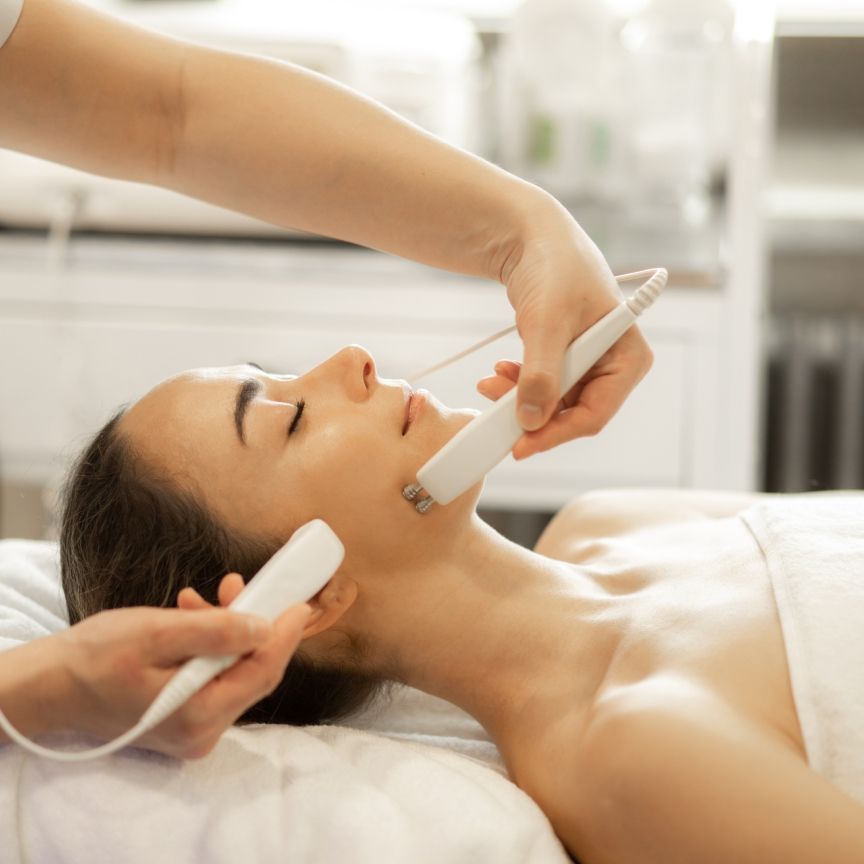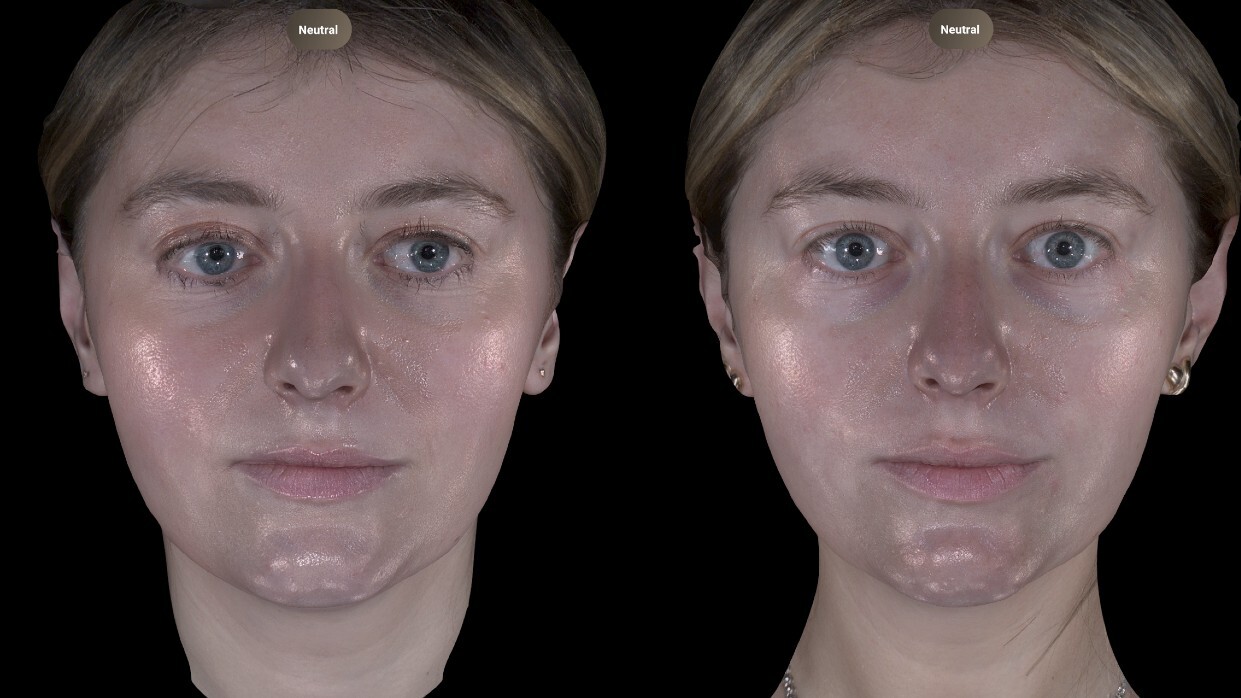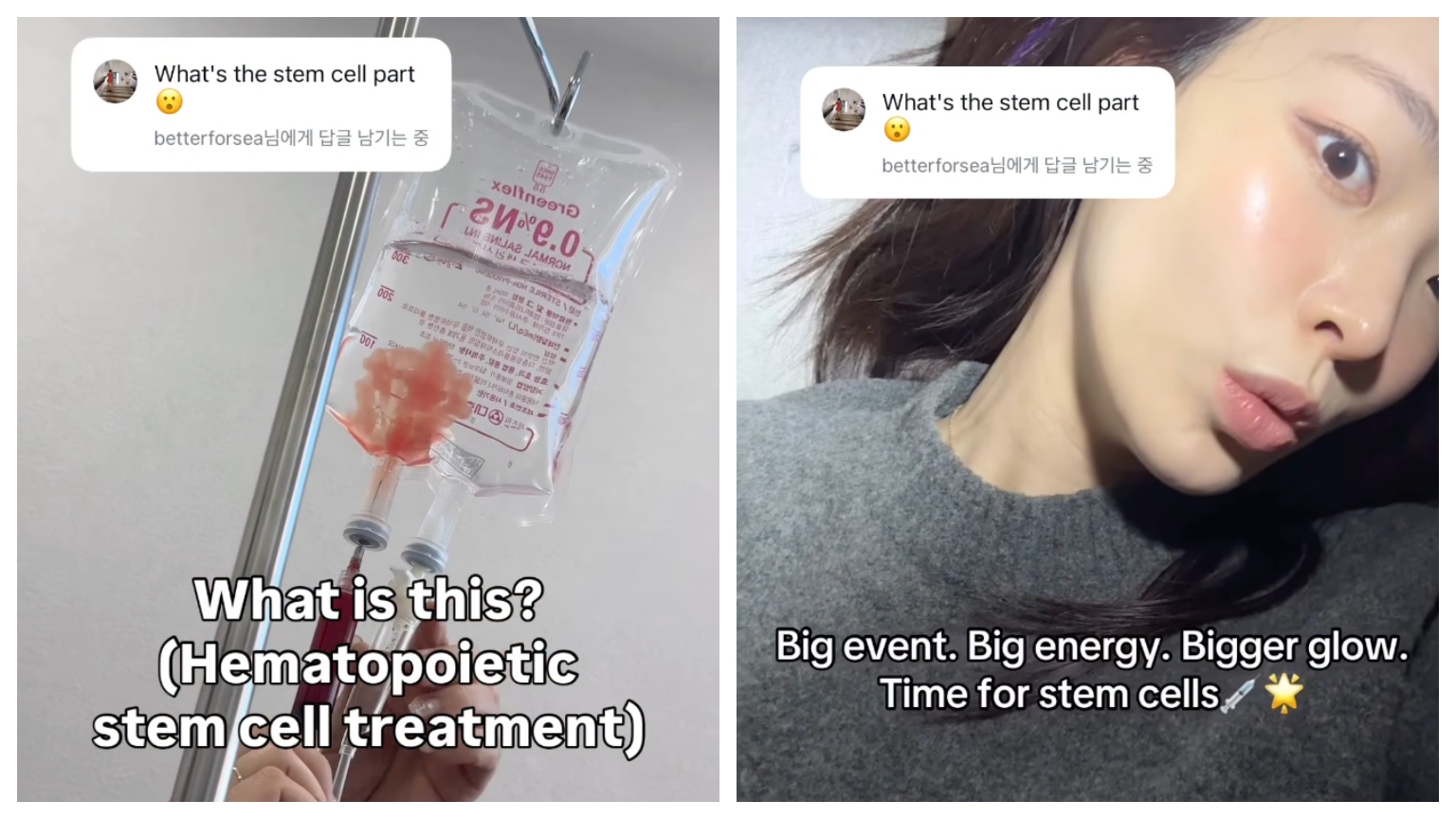
South Korea is light-years ahead of the rest of the world in aesthetics—and its denizens have the glass skin to prove it. I can’t tell you how many poreless, clear-as-day complexions I’ve seen during my many travels to the K-beauty capital of Seoul, which never fails to leave me in complete awe—and fine, jealousy—of just how common it is to look radiant and ageless. Maybe they’re born with it; maybe it’s thanks to the cutting-edge treatments that make Seoul a global hub for skincare and innovation in the global beauty industry.
South Korea’s beauty scene is fueled by a potent mix of cultural reverence for skin health, fierce competition among clinics, and an innovation pipeline that moves at a breakneck speed. Despite my regular appointments at skin clinics and (many) thousands of dollars spent in the process, I’m nowhere close to achieving the complexion quality and luminosity that beauty dreams are made of—but that won’t stop me from continuing my Sisyphean quest.
Though I’ve dabbled in my fair share of treatments in Seoul, more are continuing to crop up before my quarterly Botox begins to settle in. And while Korean beauty professionals are rightfully proud of their own native beauty procedures, techniques, and technologies, they also don’t shy away from importing the most effective and advanced treatments from across the world.
Ahead, discover the seven most in-demand treatments vetted by K-beauty insiders and Seoul’s most discerning clientele. Plus: plus expert-approved dupes you can find stateside, and a sneak peek at what Korean providers are eyeing for 2026.
The Best Korean Skincare Treatments
Rejuran
Salmon sperm as skincare has gone viral in the U.S. this past year, largely thanks to celeb endorsements from the likes of Kim Kardashian and Jennifer Aniston. Yet Rejuran—the leading Korean brand in the space—has been a staple in Seoul’s skin clinics since 2014.
“Rejuran is based on polynucleotides: ultra-purified DNA fragments derived from salmon DNA, which are micro-injected into the dermis,” says Ethan Wonuk Hwang, MD, a cosmetic physician and the director of Cheongdam Lebelle Clinic in Seoul. Polynucleotides support dermal remodeling at the cellular level, leading to clinically backed improvements in everything from skin texture and hydration to pore size and skin thickness (the last of which points to skin wins like more strength, bounce, and less visible wrinkles).
While even one round of injections will suffice to yield a glow and better hydration, Dr. Hwang says that Rejuran is worth the three starter sessions spaced a month apart each—ideally followed by quarterly or biannual booster sessions to boost elasticity and skin health over time. Admittedly, this schedule isn’t accessible for most, yet he considers it a worthy investment to bank “skin mileage points,” namely for those hoping to improve skin texture, hydration, and elasticity. (FWIW, I did two rounds of Rejuran injections this past summer in Seoul, and I’m proud to report that I’m still getting compliments on my glassy glow through mid-autumn.)
Seunghyun Kim, MD, a cosmetic physician at FINE Clinic in Seoul, also singles out Rejuran HB+ as a standout in his practice. This variety—optimal for glow, hydration, and rejuvenation—contains not only polynucleotides but also hyaluronic acid (for plumping and hydration) and lidocaine (to minimize the infamous pain from injections). I’ve gotten Rejuran injected on a handful of occasions, and unless you see a provider who’s nailed a pain-free technique with their pacing and injecting expertise (hi, Dr. Hwang!), expect a lot of spice, even with numbing cream. Though I’ve yet to try Rejuran HB+, it’s marketed as a much milder version of the OG.
Rejuran has yet to be approved by the FDA as an injectable. Still, some providers in the U.S. apply it topically after microneedling or lasers—which offers the benefit of expediting post-procedure healing—while others do offer injections (typically under the radar in an off-label capacity).
In case you’re looking for a salmon sperm dupe near you, Dr. Hwang suggests opting for platelet-rich plasma (PRP) or platelet-rich fibrin (PRF)—which use the patient’s own blood to stimulate repair and collagen production, leading to benefits like increased skin elasticity, improved skin texture, and fewer fine lines—or SKINVIVE, which boosts smoothness, hydration, and radiance. “These [alternatives] offer comparable effects, yet Rejuran simply goes a step further in true tissue regeneration,” he says.
Plus, you can always (pun alert) test the waters with salmon sperm by trying polydeoxyribonucleotide (PDRN) skincare products, which are growing in popularity in the U.S. Derived from salmon DNA fragments, PDRN also boasts regenerative properties to address large pores, dehydration, elasticity, and other signs of aging—though at-home results won’t be as pronounced as those from in-office treatments.
Sofwave

According to Dr. Kim, Sofwave is popular among Korean and American celebrities alike. This device uses ultrasound energy to target the skin layers specifically responsible for firmness and elasticity. It’s best for those hoping to lift their brows, sculpt their jawline, and improve skin laxity.
One of the biggest perks is that the device doesn’t cause fat loss—as do some heat-based anti-aging treatments including some lasers and microneedling with radiofrequency (RF)—so it’s ideal for those who want to maintain facial volume. “There’s no downtime and immediate results that last for more than six months,” he adds. However, you can anticipate some spice during your treatment. Marie Claire’s senior beauty editor, who has a high tolerance for pain, likened her Sofwave experience to feeling fireworks go off beneath her skin despite numbing cream and the device’s cooling tip. (“I’m sure it’s a little less on the pain scale if you get laughing gas for it,” she adds.) Nonetheless, she says it’s easily the best aesthetic treatment she’s tried thanks to her new chiseled jawline and more sculpted facial contours. It’s not permanent, and maintenance appointments are recommended every six to 18 months, depending on factors like your age, lifestyle, and skin quality.
Sofwave is FDA–cleared not only to snatch your face but also to tighten loose skin on the upper arms.
Re2O

Over the past few months, Re2O has been spreading all over my feed like wildfire. Containing human-derived collagen components, this next-gen injectable skin booster replenishes and improves the extracellular matrix (ECM), aka the structural support system for the skin.
“The ECM provides a scaffold for the dermis—which includes collagen for firmness, elastin for bounce, hyaluronic acid and proteoglycans for hydration, and proteins that guide repair,” says Bell Yoo, NP, a board-certified nurse practitioner and founder of Mimo Aesthetics in West Hollywood, California. “Re2O delivers this whole matrix, so patients see an immediate glow and hydration from the water holding components, and then gradual improvements in texture and elasticity as the collagen and elastin strengthen.” Similar to Rejuran, a series of three initial treatments is recommended. Yet even a single session will start to promote skin regeneration, resulting in thicker, more supple skin and fewer signs of aging (such as dark spots and lack of radiance).
Re2O isn’t available in the U.S. and likely won’t be for some time. “In the U.S., anything derived from human tissue is reviewed as a biologic, which means extensive safety trials and strict manufacturing controls,” Yoo shares. However, she cites trending biostimulators like Sculptra and Hyperdilute Radiesse as worthy substitutes. “While these don’t contain collagen directly, they help the body produce its own collagen over time and can offer somewhat comparable benefits in terms of skin quality and volume,” she shares.
XERF
XERF is emerging as a global leader in structural skin tightening. According to David Kim, MD, a board-certified dermatologist in New York City, this monopolar radiofrequency-based treatment uses two different wavelengths to heat tissues to promote collagen and elastin production. Per Dr. Hwang, the two different wavelengths (6.78 MHz and 2Mhz) achieve not only surface smoothing and tightening in the dermis (middle layer of skin) but also deeper lifting effects in the SMAS plane (aka the layer addressed during a surgical facelift), thus supporting your skin on a more structural level. As such, he likens it to a two-for-one treatment similar to performing both Thermage (which smooths and tightens the dermis) and Ultherapy (which lifts deeper layers of the skin) at the same time. And who doesn’t love more bang for their beauty buck?
It’s safe and suitable for all skin tones and is best suited for those with mild to moderate skin laxity. Simply put, it’s one of the best options on the market for a non-surgical facelift. “It also has real-time impedance feedback and an integrated cooling system, so it can deliver high energy safely while keeping pain minimal and downtime negligible,” says Dr. Hwang. While you might experience some redness right after, it should dissipate within a few hours max, and you can go about your daily life post-procedure.
Best of all? You don’t need to fly to Seoul to get lifted, as XERF was cleared by the FDA in August. Dr. David Kim recommends getting XERF once or twice a year, and Dr. Hwang says you can expect results to last for 12 to 18 months. In addition, Dr. Hwang suggests keeping an eye on XERF’s evolution. “We expect to see more long-term follow-ups, and expanded applications such as around the eyes, neck, and even body tightening,” he says.
Stem Cell Therapy

Stem cell therapy (via injections and IVs) is another procedure cropping up at top-tier skin and longevity clinics across Seoul. “Stem cells can be derived from either adipose (fat) tissue or peripheral blood, and are used for skin rejuvenation, cell regeneration, and immune support,” Yoo explains.
When there’s damage in the body (such as wounds or inflammation), stem cells release signaling molecules that recruit growth factors to repair and regenerate tissue, says Dr. Seunghyun Kim. “When these growth factors arrive, they start to replace damaged cells with new, healthier cells.” The result? More radiant skin and fewer signs of aging (such as dryness, uneven skin tone, and dark spots). These types of treatments are ideal for those hoping to target aging and inflammation on a cellular level instead of relying on surface-level support.
True stem cell therapies are tightly restricted in the U.S. due to regulatory guidelines, says Yoo, yet PRP and PRF are accessible alternatives. Secretome-based treatments, which she plans to offer herself, are also a solid dupe.
“Secretomes are the active components released by stem cells—including growth factors, peptides, and other signaling molecules—that stimulate repair, collagen production, and cell regeneration,” Yoo explains. “We typically obtain secretomes from a patient’s own hair follicles, and process them under controlled lab conditions before reintroducing them into the skin or scalp.” The material is autologous (i.e., from your own body) and cell-free, thus bypassing typical risks and regulatory issues associated with stem cell therapies without skimping on benefits like improved texture, tone, and elasticity for skin and restored hair and scalp health.
Meta Cell Technology (MCT)
Dr. Seunghyun Kim plans to continue adding stem cell therapies to his practice in 2026. “We’re going to bring in MCT, which is also available in some clinics in the U.S.,” he shares. This system uses photothermal biomodulation—a technique that converts light energy into heat—to multiply the number of stem cells, growth factors, and exosomes to maximize regenerative effects. Once these patient-derived compounds are processed, they’re delivered via IV or injection. You can think of it as a more effective version of PRP as it uses your body’s own components to promote healthier and more youthful skin, yet with more advanced technology.
“Even one treatment can offer a dramatic improvement in acne, redness, rosacea, skin tightness, and pore reduction,” says Dr. Seunghyun Kim.
Exosmart
Dr. Hwang believes that aesthetics trends for 2026 will continue to lean into anti-aging with treatments that go beyond the skin’s surface and work on cell communication, immunity, and regeneration. He’s looking forward to Exosmart, a treatment that uses exosomes derived from the patient’s own blood. Exosomes have been trending lately thanks to their potential to address photoaging (e.g., fine lines, wrinkles, and sun spots) and promote wound healing, among other regenerative benefits.
“With Exosmart, blood is collected, centrifuged, and then processed via ultrafiltration or ultracentrifugation to isolate extracellular vesicles (i.e., exosomes),” Dr. Hwang explains. “These vesicles contain growth factors, peptides, and micro-RNA that can promote tissue healing, collagen production, and anti-inflammatory signaling when re-introduced into the skin or via IV therapy.” He says you can expect smoother texture and glowing skin within a few days—as well as gradual improvements in firmness, texture, tone, and fine lines—over a few weeks. However, three to five treatments are recommended for more marked improvements.
Exosmart has yet to be approved stateside, and Dr. Hwang says PRP/PRF with growth factor concentrates are among the closest dupes you’ll find. “These offer modest rejuvenation with fine line and textural improvements usually with a series of at least three initial monthly treatments, whereas Exosmart boasts faster signaling and potentially quicker visible quality gains,” he shares. Both have little to no downtime, and most people resume normal activities on the same day.
The world is watching as Seoul continues to push the boundaries of what’s possible in aesthetics. And while not everyone can jet off to the K-beauty capital for the latest skin innovations, many treatments—and some impressive dupes—are currently within reach stateside. Add to that arsenal of top-tier Korean serums, sheet masks, and so forth, and achieving that glass-skin glow has never been more accessible.







